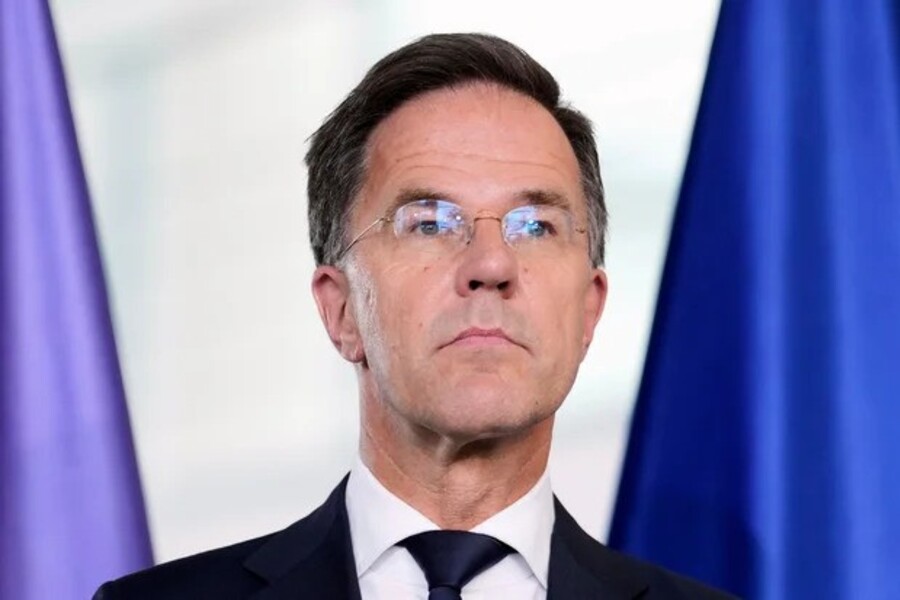In the coming week, President Donald Trump will meet with NATO Secretary General Mark Rutte in Washington as part of discussions surrounding the U.S. administration’s plan to sell weapons to NATO allies, who could then pass them on to Ukraine. The highly anticipated meeting comes as Trump is expected to make significant announcements regarding the ongoing conflict between Russia and Ukraine.
Meeting Details and Key Figures
Rutte will be in Washington on Monday and Tuesday, where he is scheduled to meet with high-level U.S. officials, including Secretary of State Marco Rubio, Defense Secretary Pete Hegseth, and key members of Congress. Although the specific agenda for Rutte’s trip has not been disclosed by NATO, it coincides with President Trump’s previously teased announcement regarding Russia. Trump had suggested earlier that his administration would be sending more weapons to Ukraine, specifically highlighting the deployment of additional Patriot missile defense systems.
Senator Lindsey Graham, who is working closely with Democratic Senator Richard Blumenthal on related issues, confirmed they would meet with Rutte during the visit. In an interview with “Face the Nation,” Graham emphasized that a “turning point” in the Russia-Ukraine conflict was imminent.
U.S. Support for Ukraine: Weapons and More
Trump’s commitment to bolstering Ukraine’s defense capabilities came into sharper focus after he confirmed the U.S. would send additional military aid, including Patriot missiles, though the exact quantity remains undecided. The White House has also signaled plans to provide NATO allies with a substantial amount of weaponry that could be redirected to Ukraine, with European countries buying replacements directly from the U.S.
Graham further elaborated on this strategy, stating that the U.S. is ready to sell a significant quantity of weapons to European NATO members. These weapons would then be passed on to Ukraine, ensuring that the Ukrainian military is equipped to defend itself against Russian aggression. The deal represents an evolving approach where American military aid continues to flow to Ukraine, alongside financial agreements, including a minerals pact with Ukraine worth trillions of dollars.
Diplomatic and Economic Pressure on Russia
As the war rages on, there are increasing calls from both U.S. lawmakers and European allies to impose tougher sanctions on Russia. A bipartisan bill, which has gained considerable traction in the Senate, proposes a hefty 500% tariff on goods imported from countries continuing to purchase Russian oil and gas. This legislative push targets economic powerhouses like China and India, which together account for a significant portion of Russia’s energy exports.
Graham, along with Blumenthal, is advocating for sanctions that would hit Russian President Vladimir Putin’s economy hard. The proposed bill would give President Trump the flexibility to impose severe tariffs on countries that support Putin’s regime, as well as additional sanctions on Russia itself. Graham described this initiative as a “sledgehammer” aimed at ending the conflict by choking off financial resources to Russia’s war machine.
Potential Financial Support for Ukraine
In addition to military aid and sanctions, Trump is reportedly considering approving new funding for Ukraine, marking the first significant funding decision since he assumed office. The U.S. has approximately $3.85 billion in leftover presidential drawdown authority from the previous administration, which could be used to send military equipment to Ukraine. Additionally, the president has the legal authority to seize around $5 billion in foreign Russian assets, which could be redirected to support Ukraine’s defense.
This funding, along with a growing sanctions package, signals the U.S.’s commitment to supporting Ukraine in its ongoing struggle against Russian aggression. While Congress is prepared to move forward with the legislation, Republican leaders are waiting for Trump’s approval before taking the next steps.
What’s Next?
As President Trump meets with NATO officials and discusses these new plans, all eyes will be on how the U.S. and its European allies strategize to counter Russia’s military actions. With the fate of Ukraine hanging in the balance, these decisions will likely shape the direction of the war in the coming months, signaling a decisive moment in both U.S. foreign policy and the global geopolitical landscape.
The growing partnership between the U.S., NATO, and Ukraine highlights the global stakes involved, as countries weigh their roles in addressing one of the most significant military conflicts in recent history
